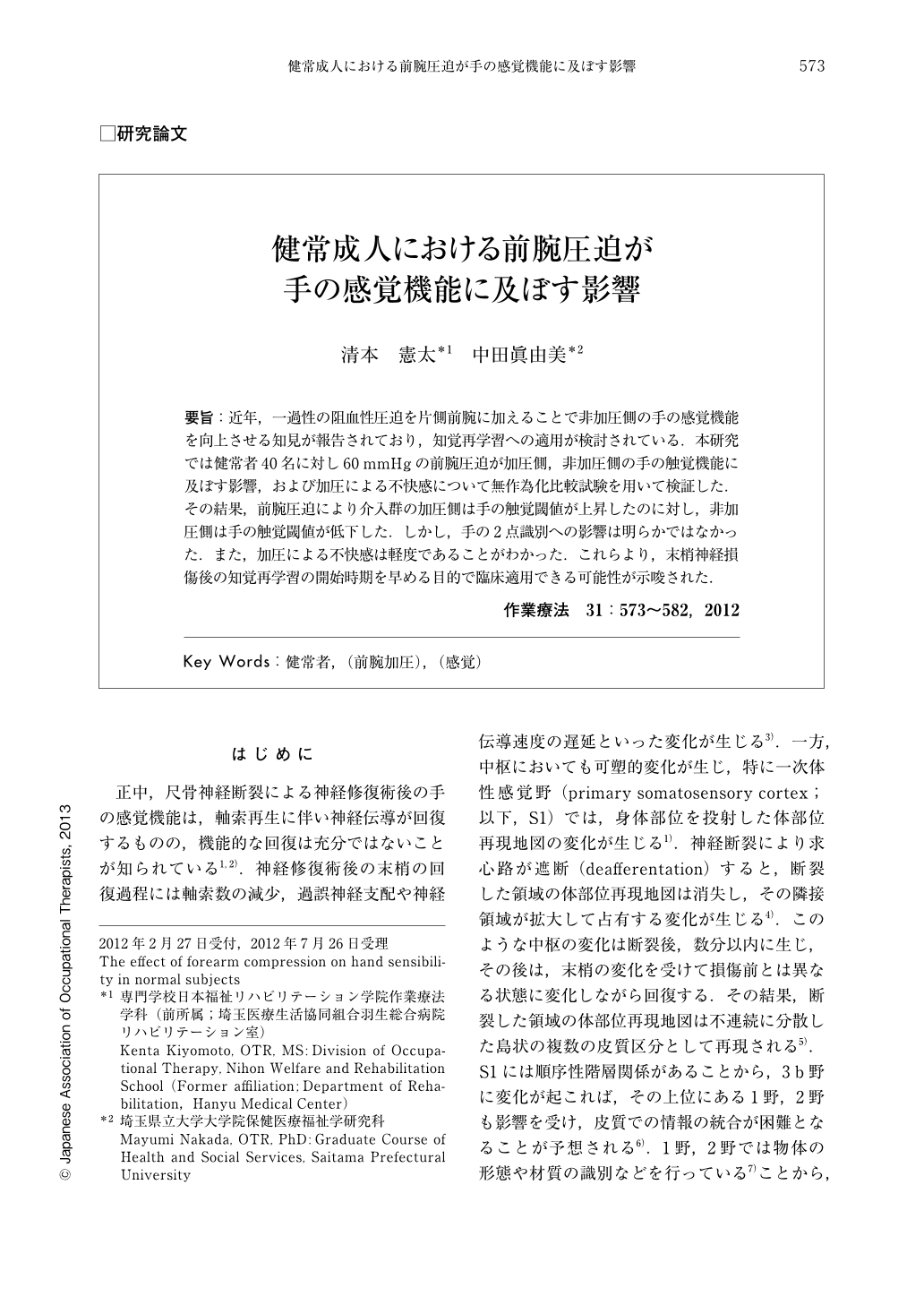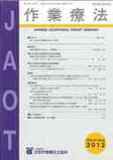Japanese
English
- 販売していません
- Abstract 文献概要
- 1ページ目 Look Inside
- 参考文献 Reference
要旨:近年,一過性の阻血性圧迫を片側前腕に加えることで非加圧側の手の感覚機能を向上させる知見が報告されており,知覚再学習への適用が検討されている.本研究では健常者40名に対し60mmHgの前腕圧迫が加圧側,非加圧側の手の触覚機能に及ぼす影響,および加圧による不快感について無作為化比較試験を用いて検証した.その結果,前腕圧迫により介入群の加圧側は手の触覚閾値が上昇したのに対し,非加圧側は手の触覚閾値が低下した.しかし,手の2点識別への影響は明らかではなかった.また,加圧による不快感は軽度であることがわかった.これらより,末梢神経損傷後の知覚再学習の開始時期を早める目的で臨床適用できる可能性が示唆された.
Recent studies in normal subjects have shown that forearm tourniquet compression improved both the sensibility and cortical representation of the contralateral hand. Ideally, tourniquet compression creates opportunities for sensory re-learning. This randomized, controlled study investigated the effect of 60mmHg compression of the forearm on hand sensibility in 20 normal subjects. An equal cohort of 20 subjects was tested without tourniquet pressure. In addition, this study quantified the resulting discomfort from the forearm compression. The results indicated that tactile threshold increased on the compression side but decreased on the contralateral hand. However, no statistically significant difference in two-point discrimination was found between the two hands. While forearm and/or hand discomfort in the experimental group was significantly greater than the control group, it was significantly less than subjects who experienced 200-250mmHg of tourniquet compression. The study concluded that while 60mmHg compression of the forearm improves tactile threshold of the contralateral hand, it doesn't improve two-point discrimination in either the contralateral or the ipsilateral hand. Furthermore, this study demonstrated that 60mmHg is better tolerated and causes less discomfort than the 200-250mmHg compression used in previous studies. These findings suggest that clinicians can apply forearm compression to facilitate sensory re-learning after peripheral nerve repair in the upper extremity.

Copyright © 2012, Japanese Association of Occupational Therapists. All rights reserved.


